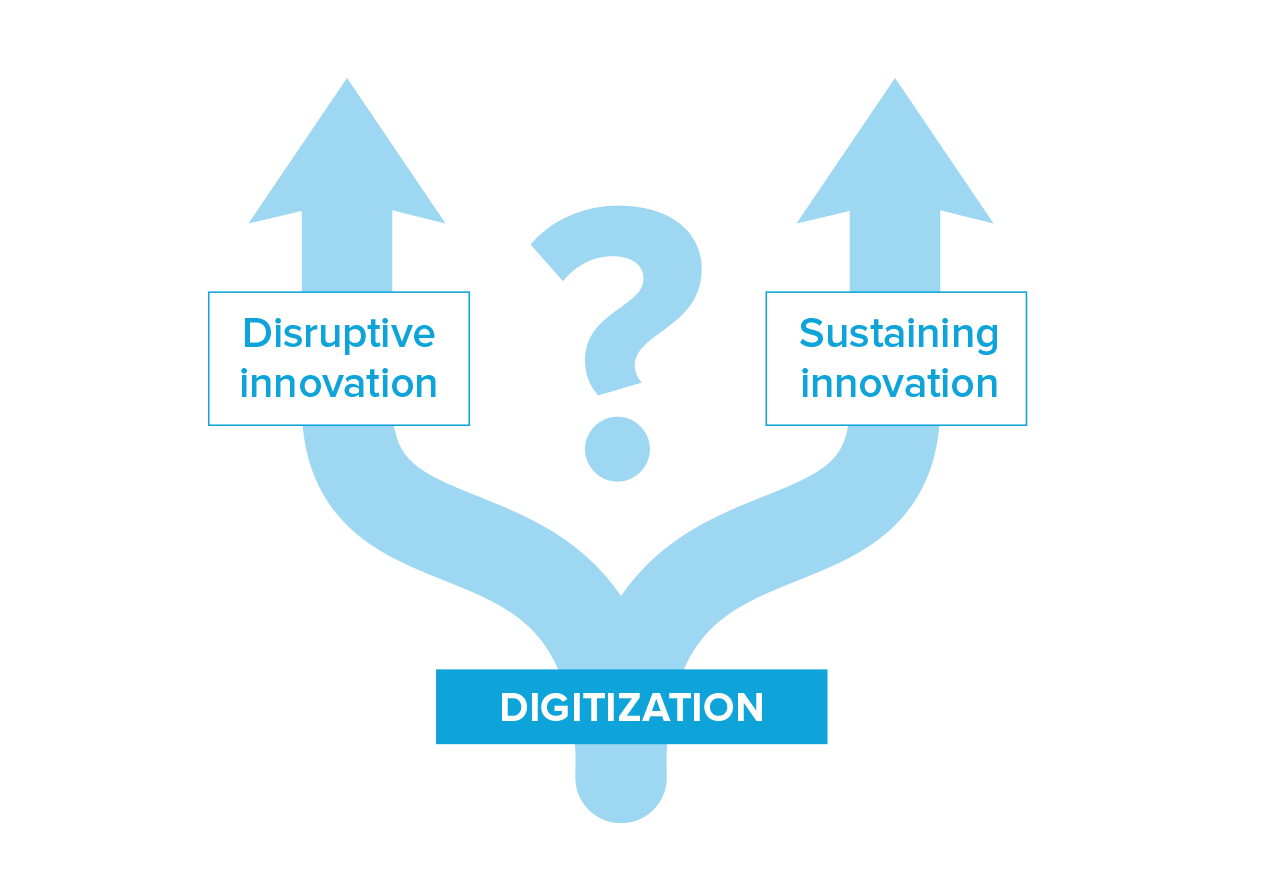Building Digitalization Teams Right – Goals and Success Factors
Chief Digital Officer, Head of Digitization, Digitization Team or more imaginative titles like Digital Guru – no matter what they are called, people are filling the digitization roles in companies the length and breadth of industry. The real estate sector in particular, which for a long time was reluctant to embrace digitization, is now taking the issue seriously and creating positions and teams to push the topic. The housing industry still lags somewhat behind the commercial and retail sectors, but is now also venturing deeper into the digital realm.
So it seems a good time to take a moment to think about the best way to build up a digitization team. After all, while one can and indeed should rely to some extent upon practical experience in the field, there are also studies, books and many other sources of information on the subject. Yet these sources of information point in two very different directions. In order to make sense of all the advice, it is important to consider the objectives that the digitization team will be expected to achieve.
The digitization team’s goals
Essentially, the objective you are striving to achieve is the starting point for thinking about exactly what you need a digitization team for. There are of course many differing objectives, but they all basically follow one of two main trains of thought: Either you want to digitize to improve existing structures and processes, or you want to develop new digital solutions and products. As objectives go, the two could hardly be more disparate. In the former case, the team has to work around internal structures, get people excited about digitization, know their own processes and also consider political factors within the company. In other words, the team’s main task can be described as digital change management with the goal of improving the existing organization. In the latter case, the team needs to develop new solutions. It is not a question of changing or understanding existing structures. Indeed, that could even be a hindrance and might limit free thinking. Unhampered by the need to stick to any current structures or products, it is a matter of developing innovative solutions for markets and target groups that may just be emerging.
That said, improving existing processes can also be somewhat innovative. So it is important to clearly differentiate between the kind of sustaining innovation that constitutes an improvement and a disruptive innovation that denotes something brand new. A sustaining innovation concerns itself with existing technologies or processes. It makes tried-and-tested tools and methods more efficient without replacing them with something completely different. Disruptive innovation, on the other hand, aims to develop something completely new. Therein lies the difference between sustaining and disruptive innovation. You can read more on this subject in Clayton M. Christensen’s management classic, “The Innovator’s Dilemma”.
To apply an analogy from the automotive industry: The continuous improvement of the internal combustion engine to reach new top speeds is a sustaining innovation. On the other hand, the development of a new method of propulsion like an electric motor constitutes a disruptive innovation.

When sustaining innovation is your goal
Most digitization teams in the real estate and housing industry are there to improve internal processes. In an industry where many companies will have large numbers of employees hitting retirement in the coming years, it is only logical to want to become more efficient by applying digital solutions. Existing IT providers and start-ups are bringing many new approaches to the market that can be used to speed up existing processes.
A specific example may help to better illustrate what we’re talking about here. In every property, there will be damages that need to be repaired. These processes are known as minor repairs management or reactive maintenance. Digitization offers a wide range of possibilities to improve these processes. Apps through which tenants can report damage are already well known in the market. But what some companies may not know is that chat bots offer another way to automate the recording of damage. However, the use of chat bots is predicated upon a detailed knowledge of the existing process. What a chat bot will normally do is handle the recording of the case. Consequently, there must be a defined method of recording cases so far, data from existing catalogues must be entered ready for use, there must be a functioning way to log the case in the ERP system and the nature of the damage needs to be examined to determine whether it is an emergency or not. These are just a few examples of what improving an existing process by means of digitization can involve.
Indeed, a detailed knowledge of the process is necessary in order to be able to identify areas in which sustaining innovations make sense in the first place. After all, not every solution on the market is relevant or suits every process. It also helps if you know the people involved in the process – the ones who are going to be using the new solution. Approaching them, identifying any possible fears and resistances they may have and overcoming them in a specific and targeted manner is one of the keys to success with sustaining innovations.
Implementing sustaining innovations to improve existing processes is not a new concept, nor is it something that came in with the age of digitization. Ever since the advent of competition, good managers have been working to become better and more efficient and to gain competitive edge. Doing so is part of the core business of every functioning company and, as such, should be embedded in the organization.
Suitable forms for the realization of sustaining innovations include putting support functions on the task, having mixed teams working together in a task force, upgrading the existing organizational development, and so on. It can also be useful to link up with process advocates or department heads in order to generate ideas and understand which process components are in need of improvement. That is why a digitization team tasked with sustaining innovation must be part of the core organization.
When disruptive innovation is your goal
Disruptive innovation is a beast of a completely different nature. Being innovative in the sense of disruptive, according to the unanimous opinions espoused by the theory books and practitioners alike, is not something you can do within the framework of an existing organization. In other words, the many companies that are opening up satellite offices in Berlin, for example, to give them a way in the startup scene, have the right idea – if their aim is to create disruptive innovations in the office. There are many well researched reasons why this should be so:
Small teams and small organizations are much better at reacting fast. The gold standard of product development today is called the Lean Startup methodology. How this can be transferred to the housing industry is something we have described for you here. The Lean Startup methodology is applied by young companies the world over. It means that if a team wants to be innovative and develop new solutions, it must do so with the speed of a startup. This is simply not possible in large organizations with lengthy decision-making processes, where it can take months just to get an appointment with the CEO or other top management. Decisions need to be made then and there.
Corporate controlling is the very antithesis of innovative. Seeking to address a market that does not yet exist with an elaborate business plan detailing the future revenues and margins that the “innovation unit” is expected to achieve is an exercise in futility. The plan will never be met. In practice, this usually results in the team being frequently reorganized or even disbanded due to a lack of success as its goals remain unattained (and unattainable).
New markets are usually very small and therefore not attractive to large companies per se. For many, many years, the market for electric cars was tiny – and it still is, measured against the market for conventional drive vehicles. Only a small company with a lean cost structure to match will see an attractive opportunity there.
Customers don’t know what they want. But if you listen to your customers and get their feedback, as every good manager working in the non-disruptive sphere does, you will most certainly make improvements to the internal combustion engine, to stick with the automotive analogy. What you won’t do, however, is think up a totally new drive system. Henry Ford put it in a nutshell when he famously said, “If I had asked people what they wanted, they would have said faster horses”. The disruptive innovation team must therefore be unencumbered by the influence of existing customers. That’s the only way they’ll be able to think freely.
A company’s ability to succeed in its current core business generally constitutes one of the reasons why it is not particularly innovative. All companies have processes – whether they are written down or not, processes (in the sense of workflows) always exist. A process that guides the actions of service providers in the area of facility management is probably not a suitable process to guide service providers seeking to implement a new app for tenants. This example in itself should make it clear that existing workflows cannot simply be imposed on top of new situations.
For all of the reasons set out above, a unit tasked with disruptive innovation must be managed and set up like a separate company. It needs to be in a small organizational entity outside the main organization, with its own profit responsibility, its own decision-making processes and its own strategic mission.
Summary
The specific goal of the digitization team determines the correct organizational setup for that team. In practice, the goal of sustaining innovation is the most common, which is why it makes sense to build an internal team. But the fact that hardly any genuinely disruptive innovations have been sought in the real estate sector so far does not mean that this goal may not also be relevant at times. Such a responsibility should not be assigned to the internal digitization team, but must be entrusted to a separate organizational entity that has as little as possible to do with the existing organization. It follows that if you wish to pursue both goals you will need two teams.
Contact
Do you have questions regarding this topic? Please contact:
-
 Dr. Mathias Hain
Dr. Mathias Hain-
email hidden; JavaScript is required
-
email hidden; JavaScript is required